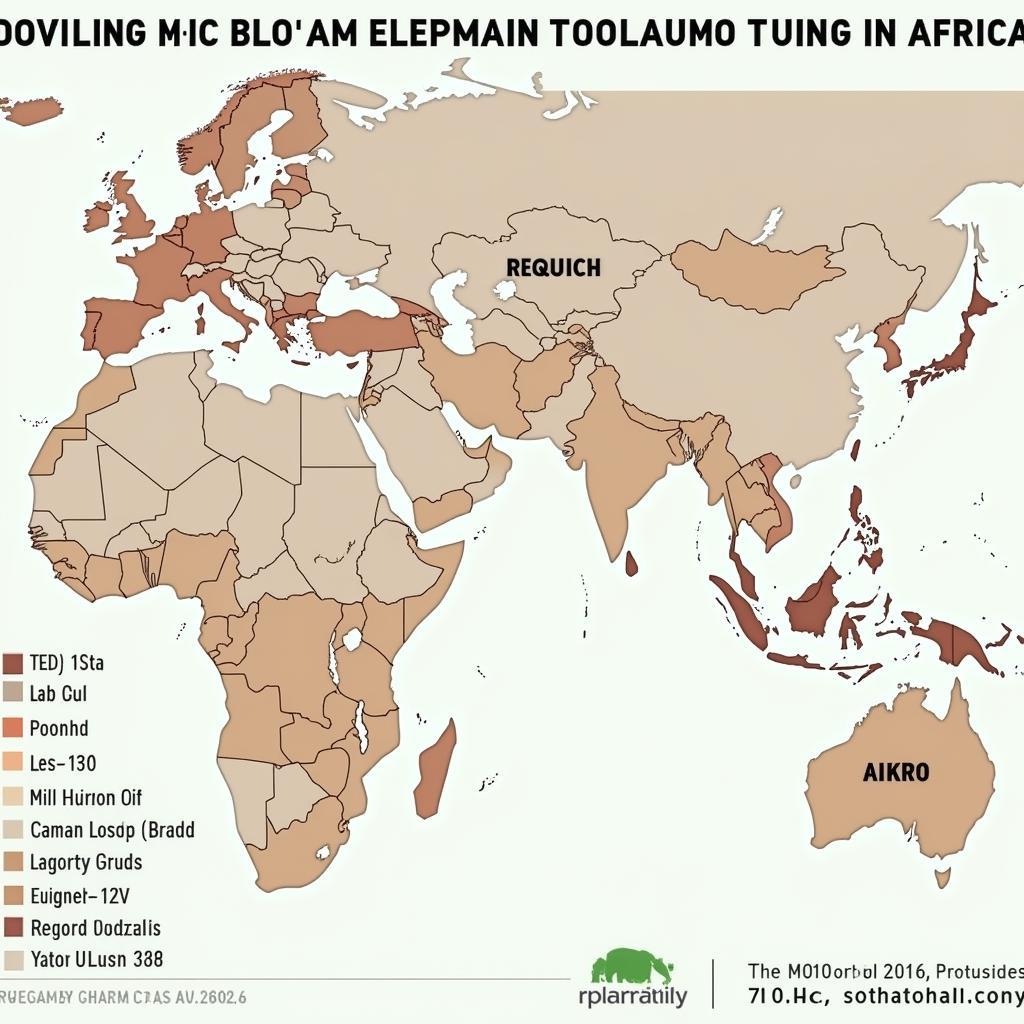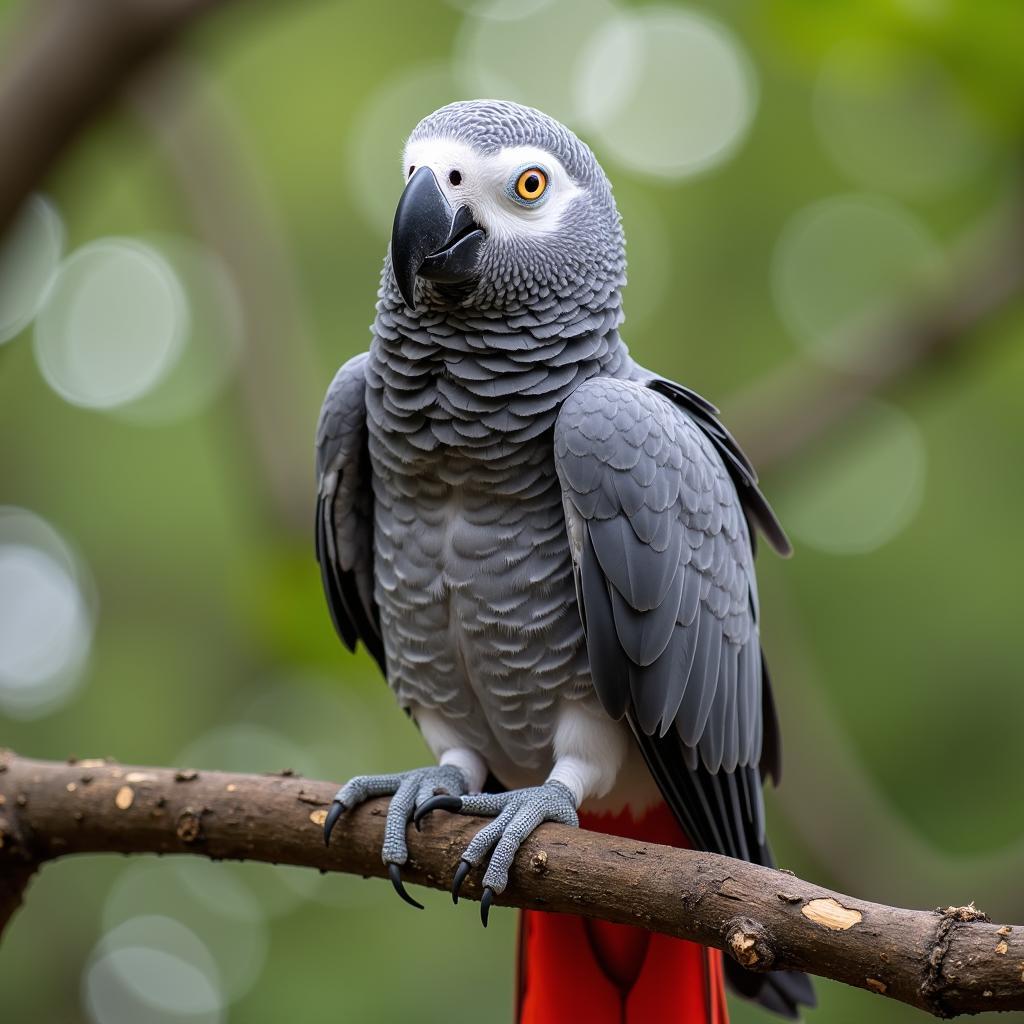The African Grey Bird Cage: A Comprehensive Guide to Providing a Suitable Home for Your Feathered Friend
The African Grey parrot, renowned for its intelligence and ability to mimic human speech, is a captivating companion. However, ensuring their well-being requires a suitable environment. A well-designed African Grey Bird Cage is crucial for their physical and mental health. This comprehensive guide will delve into the essential aspects of choosing the perfect cage for your African Grey, covering everything from size and materials to enrichment and safety.
Understanding the Importance of a Suitable Cage
“A well-chosen cage is the foundation for your African Grey’s happiness and health,” emphasizes renowned avian veterinarian Dr. Emily Carter. “It provides a safe space for them to rest, play, and thrive.” A properly sized cage allows them to spread their wings and engage in natural behaviors, preventing boredom and stress.
Key Factors to Consider When Choosing an African Grey Bird Cage
Size Matters:
- Minimum Cage Dimensions: A general rule of thumb is to select a cage with a minimum of 3 feet in width, 3 feet in height, and 2 feet in depth. This allows for ample space to fly, climb, and play.
- Spacing: Bar spacing should be no more than 1 inch apart to prevent your bird from squeezing through and potentially getting stuck.
Materials:
- Stainless Steel: A preferred choice for durability and ease of cleaning. Stainless steel cages are resistant to rust and scratches, making them long-lasting.
- Powder-Coated Steel: Often used for decorative purposes, but ensure the coating is non-toxic and free of lead.
Features:
- Perches: Provide various sizes and textures to accommodate natural foot movements and help prevent foot problems.
- Playgrounds: Offer plenty of toys for stimulation and entertainment.
- Food and Water Dishes: Choose durable, easy-to-clean options with secure attachments.
- Cage Doors: Look for secure doors with locks that your bird cannot open.
Enrichment: Making the Cage a Stimulating Environment
“Enrichment is vital for an African Grey’s mental well-being,” explains avian behaviorist Dr. Michael Thompson. “Their cages should be more than just a place to sleep. They need opportunities to explore, play, and exercise their minds.”
Essential Enrichment Items:
- Swinging Toys: Encourage physical activity and provide entertainment.
- Foraging Toys: Stimulate natural foraging instincts by hiding treats and food within the toys.
- Mirrors: Offer social interaction and can be a source of entertainment for your bird. However, use them cautiously as excessive exposure can lead to obsessive behavior.
Safety Considerations:
- Non-Toxic Materials: Choose toys and cage accessories made from non-toxic materials.
- Secure Attachments: Ensure all toys and perches are securely attached to prevent your bird from dislodging them and swallowing small pieces.
- Regular Inspection: Inspect your bird’s cage and toys regularly for signs of damage and replace any worn or broken items.
Choosing the Right Cage for Your African Grey
When selecting a cage for your African Grey, consider these factors:
- Lifestyle: Are you an avid bird enthusiast or a novice? If you have limited space, consider a smaller cage with options for enrichment.
- Personality: Does your bird have a playful or calm demeanor?
- Budget: Cages range in price depending on size, materials, and features.
Frequently Asked Questions (FAQ)
Q: How often should I clean my African Grey’s cage?
A: You should aim to clean your bird’s cage at least once a week, or more often depending on their activity levels.
Q: What are the best cage materials?
A: Stainless steel and powder-coated steel are considered safe and durable options.
Q: How do I choose the right size cage for my African Grey?
A: A cage with at least 3 feet in width, 3 feet in height, and 2 feet in depth is generally recommended.
Q: Are there any cage features that I should avoid?
A: Avoid cages with thin, fragile bars, hazardous paints, or sharp edges.
Q: How do I know if my bird is happy with its cage?
A: Signs of a happy bird include active play, grooming, and vocalizations.
Conclusion
Providing a suitable cage is essential for your African Grey’s well-being. By carefully considering size, materials, features, and enrichment, you can create a safe and stimulating environment that allows your feathered friend to thrive. Remember to always prioritize safety, and be observant of your bird’s behavior to ensure they are happy and healthy.
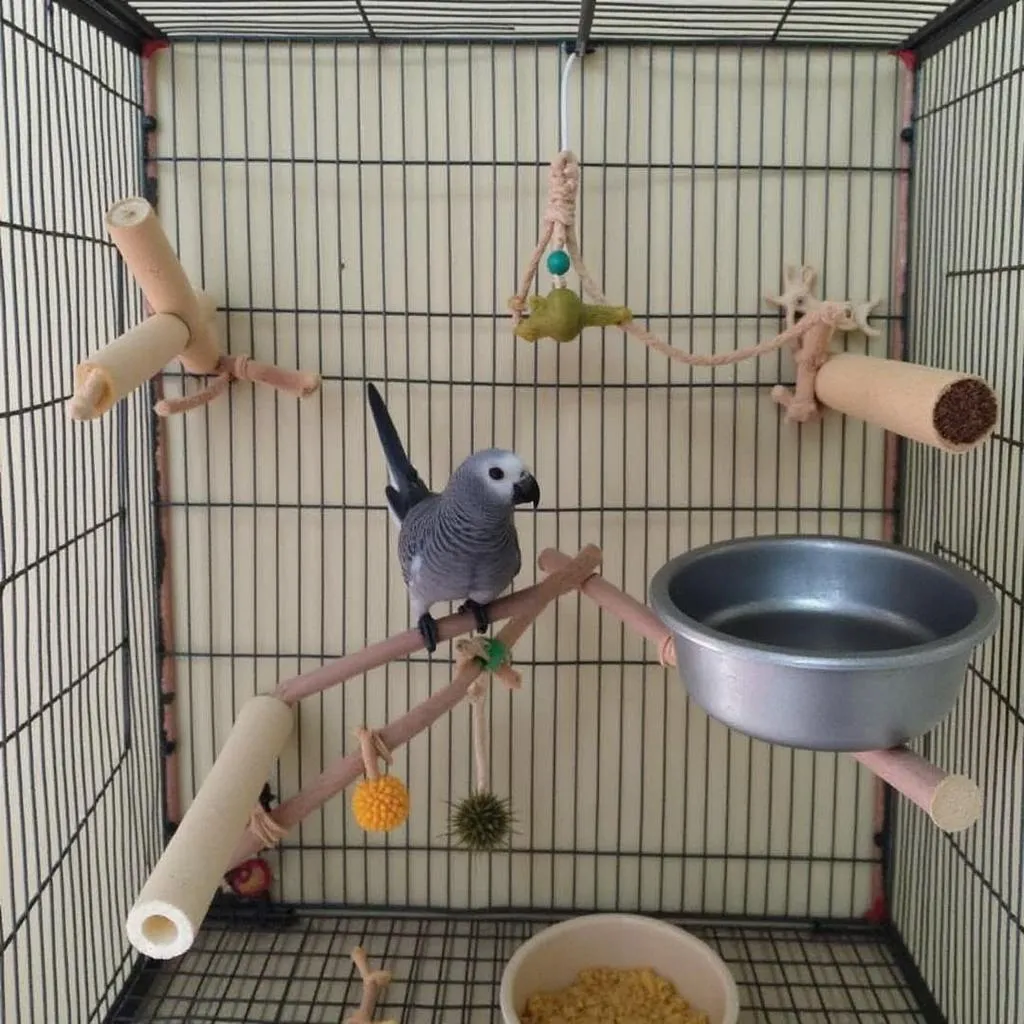 African Grey Bird Cage Interior with Toys and Perches
African Grey Bird Cage Interior with Toys and Perches
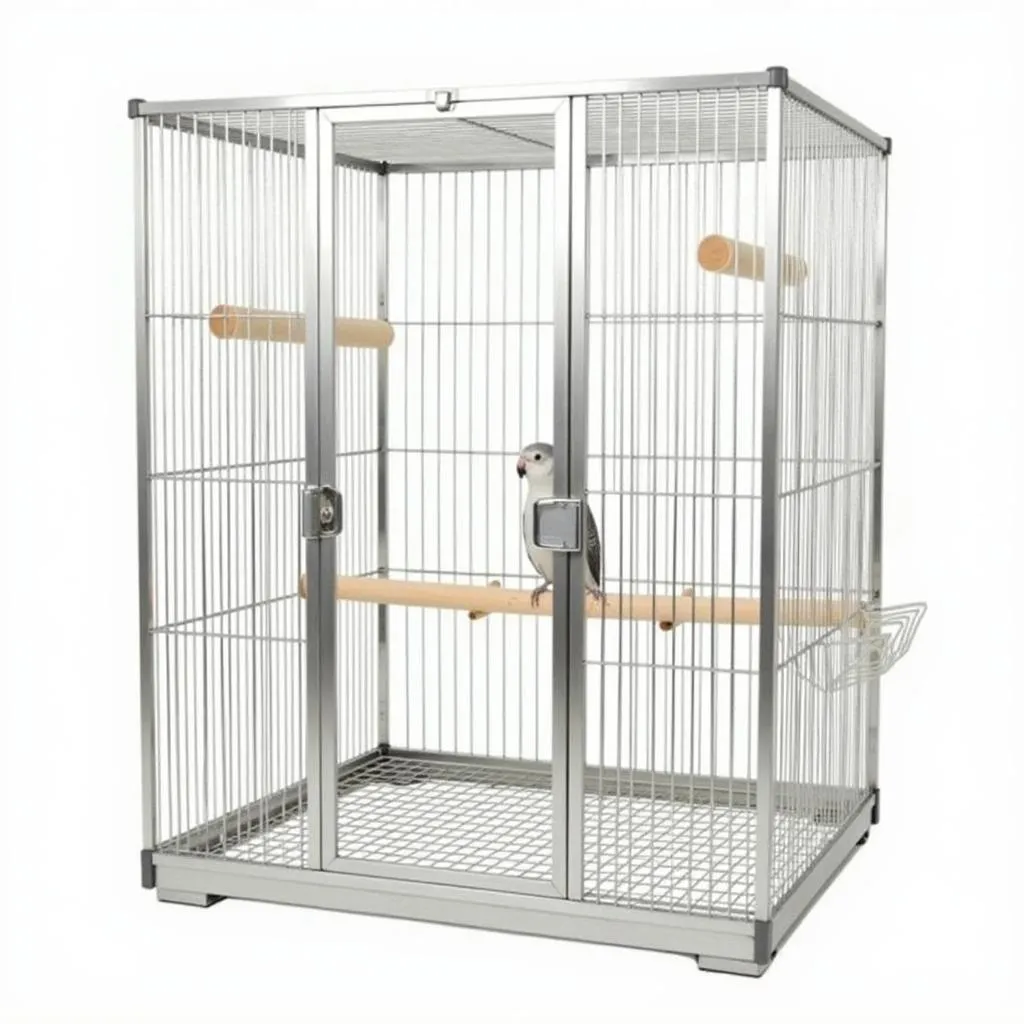 African Grey Bird Cage Exterior – Stainless Steel
African Grey Bird Cage Exterior – Stainless Steel
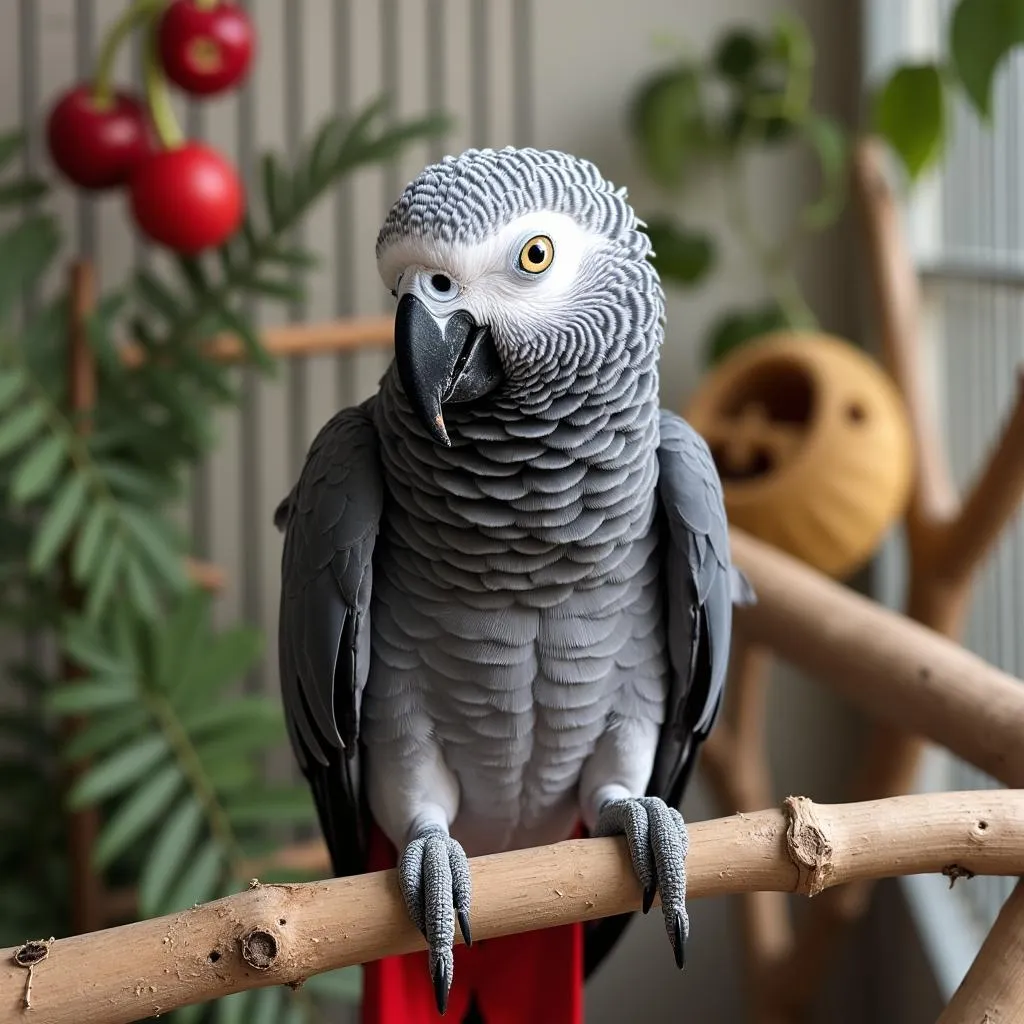 African Grey Bird Cage Enrichment – Toys and Branches
African Grey Bird Cage Enrichment – Toys and Branches
If you have any further questions or need assistance in selecting the perfect cage for your African Grey, feel free to contact us. We are happy to help you find the ideal home for your beloved companion.

